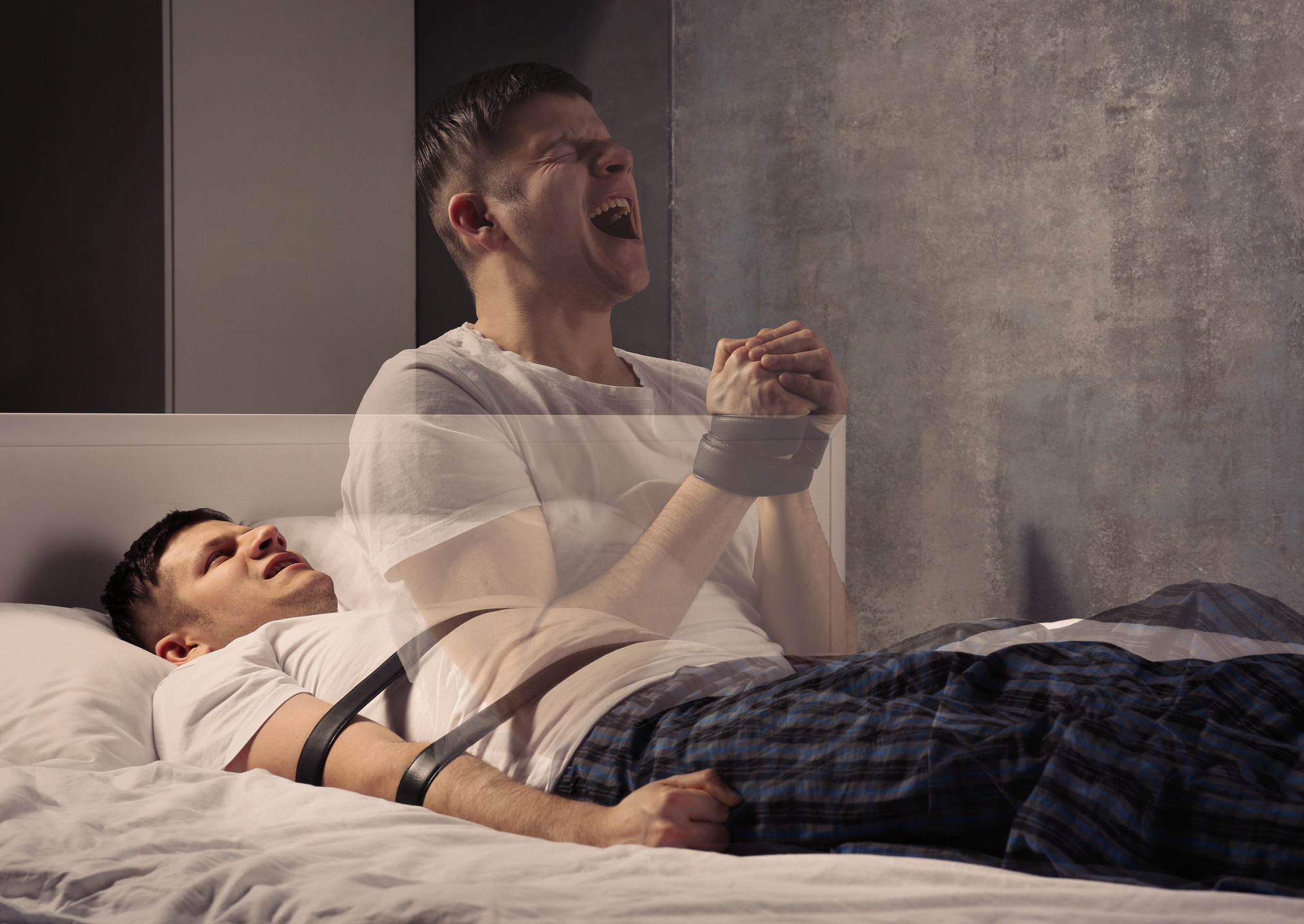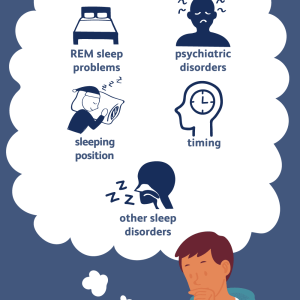- 20 February 2024
- 144
Stuck in Sleep: Why It Happens and How to Deal with Sleep Paralysis

Introduction
Sleep paralysis is a perplexing phenomenon that can leave individuals feeling trapped in their own bodies, unable to move or speak despite being conscious. It often occurs during the transition between wakefulness and sleep, leading to a sense of helplessness and fear. In this comprehensive guide, we’ll delve into the causes of sleep paralysis and explore effective strategies for coping with this unsettling experience.
Understanding Sleep Paralysis
What is Sleep Paralysis?
Sleep paralysis is a temporary inability to move or speak that occurs when a person is falling asleep or waking up. It is often accompanied by hallucinations and a feeling of pressure on the chest, making it a frightening experience for those who encounter it.
The Science Behind Sleep Paralysis
During normal sleep, the body goes through different stages, including REM (rapid eye movement) sleep and non-REM sleep. Sleep paralysis occurs when the brain transitions between these stages improperly, causing a disconnect between the brain and the body’s ability to move.
Common Symptoms of Sleep Paralysis
- Inability to move or speak
- Feeling of pressure on the chest
- Hallucinations, often of a menacing or shadowy figure
- Intense fear or anxiety

Why Does Sleep Paralysis Happen?
Sleep Disorders
Sleep paralysis is often associated with other sleep disorders, such as narcolepsy, obstructive sleep apnea, and insomnia. These conditions can disrupt the normal sleep cycle and increase the likelihood of experiencing sleep paralysis.
Stress and Anxiety
High levels of stress and anxiety can also contribute to episodes of sleep paralysis. Emotional distress can disrupt the sleep-wake cycle and make it more difficult for the body to transition smoothly between sleep stages.
Sleeping Position
Sleeping on your back increases the risk of experiencing sleep paralysis. This position can make it easier for the muscles to relax excessively during sleep, leading to a higher likelihood of experiencing paralysis upon waking.

Coping Strategies for Sleep Paralysis
Improve Sleep Hygiene
Maintaining a consistent sleep schedule and creating a relaxing bedtime routine can help improve sleep quality and reduce the frequency of sleep paralysis episodes. Avoiding caffeine and electronic devices before bed can also promote better sleep hygiene.
Manage Stress
Finding healthy ways to cope with stress and anxiety, such as practicing mindfulness meditation or engaging in regular exercise, can reduce the likelihood of experiencing sleep paralysis. Relaxation techniques before bed can also promote a sense of calm and aid in falling asleep more easily.
Adjust Sleeping Position
Sleeping on your side rather than your back can help prevent sleep paralysis by reducing the likelihood of muscle relaxation that leads to paralysis. Using supportive pillows or sleep aids can help maintain a comfortable sleeping position throughout the night. Explore More About (Swelling Ankles)
Seeking Professional Help
Consult a Sleep Specialist
If sleep paralysis persists despite trying various coping strategies, it may be beneficial to consult a sleep specialist. They can conduct a thorough evaluation to rule out underlying sleep disorders and recommend appropriate treatment options.
Therapy and Medication
In some cases, therapy or medication may be recommended to address underlying anxiety or sleep disorders contributing to sleep paralysis. Cognitive-behavioral therapy (CBT) can help individuals learn coping mechanisms and reduce the frequency of episodes.
Coping Strategies for Sleep Paralysis
| Coping Strategy | Description |
|---|---|
| Improve Sleep Hygiene | Maintain a consistent sleep schedule, create a relaxing bedtime routine, avoid caffeine and electronics |
| Manage Stress | Practice mindfulness meditation, engage in regular exercise, use relaxation techniques before bed |
| Adjust Sleeping Position | Sleep on your side, use supportive pillows or sleep aids |
| Consult a Sleep Specialist | Seek evaluation and treatment from a sleep specialist for persistent sleep paralysis |
| Therapy and Medication | Consider cognitive-behavioral therapy or medication to address underlying anxiety or sleep disorders |
Conclusion
Sleep paralysis can be a distressing experience, but understanding its causes and implementing effective coping strategies can help individuals manage and reduce its occurrence. By improving sleep hygiene, managing stress, and seeking professional help when needed, individuals can regain control over their sleep and wakefulness, minimizing the impact of sleep paralysis on their overall well-being.
In conclusion, sleep paralysis is a complex phenomenon with various contributing factors, but with the right approach, it is possible to mitigate its effects and improve sleep quality. By prioritizing sleep hygiene, managing stress levels, and seeking appropriate medical intervention when necessary, individuals can reclaim restful and rejuvenating sleep, free from the constraints of sleep paralysis.

